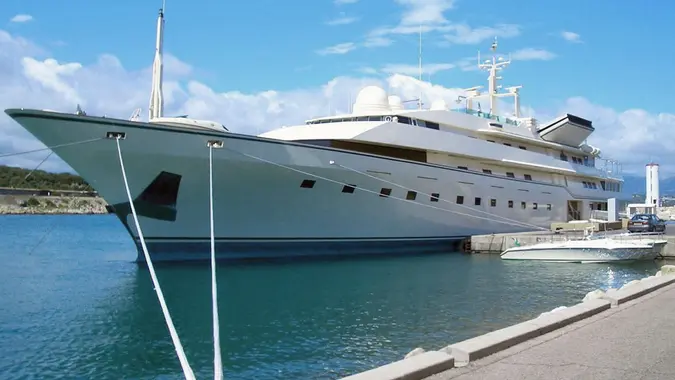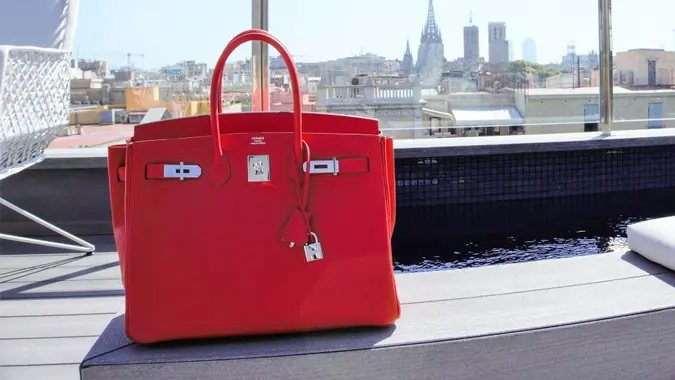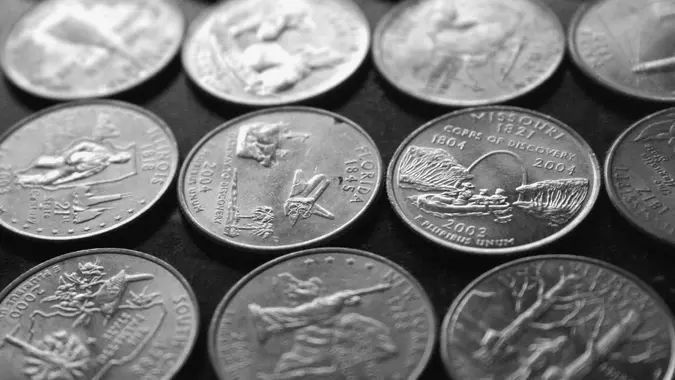3 Major Expenses That Make the Rich Poor

Commitment to Our Readers
GOBankingRates' editorial team is committed to bringing you unbiased reviews and information. We use data-driven methodologies to evaluate financial products and services - our reviews and ratings are not influenced by advertisers. You can read more about our editorial guidelines and our products and services review methodology.

20 Years
Helping You Live Richer

Reviewed
by Experts

Trusted by
Millions of Readers
The phrase “work hard and play harder” easily applies to many of the newly rich. But that behavior can quickly leave them in the poor house.
“In my years working with high-net-worth clients, I’ve witnessed firsthand how certain extravagant purchases can quickly erode even substantial fortunes,” said Kevin Shahnazari, founder and CEO of FinlyWealth.
Below are some major expenses that make the wealthy poor.
On the flip side, find out five things the middle class waste their money on, according to a financial advisor.
Private Jets
“One of the most financially destructive expenses I’ve seen is the acquisition of private jets,” explained Shahnazari.
He said many wealthy individuals underestimate the actual cost of owning these aircraft, focusing solely on the purchase price while overlooking the staggering ongoing expenses.
“I’ve observed that private jets are often the Achilles’ heel of wealthy individuals’ financial plans,” according to Shahnazari. “The initial price tag, which can easily exceed $50 million for a new, top-of-the-line model, is just the tip of the iceberg.”
He continued, “The real financial drain comes from the relentless operational costs, surpassing $1 million annually, even for those who use their jets sparingly.”
To illustrate this point, Shahnazari shared a specific example from his experience.
“I once worked with a client who purchased a Gulfstream G650 for $65 million. He viewed it as a status symbol and a convenience for his frequent business travels. However, he was shocked to discover that the yearly expenses for maintaining and operating the jet amounted to nearly $5 million,” he said.
These costs included routine maintenance, fuel, crew salaries, hangar fees, insurance, and necessary upgrades to comply with aviation regulations.
“The financial burden of the jet began to erode a significant portion of his investment income, forcing him to liquidate other assets just to keep up with the expenses,” Shahnazari continued. “Within a few years, what he thought would be a luxury showcasing his success had significantly affected his financial decline.”
Mega Yachts
“Another prime example of a wealth-draining purchase I’ve encountered in my work is the acquisition of mega-yachts,” said Shahnazari.
These floating palaces, he explained, represent the pinnacle of luxury but come with a price tag that can sink even the most robust fortunes.
“In my experience advising high-net-worth individuals, I’ve seen mega-yachts emerge as a particularly treacherous financial commitment,” the expert said.
He noted that the largest and most opulent models can cost upwards of $300 million. However, the truly staggering aspect is the annual operating cost, which typically runs about 10% of the purchase price.
“A $300 million yacht might require $30 million annually to maintain and staff,” Shahnazari said.
He recalled a client who bought a 300-foot custom yacht for $150 million.
“He was thrilled with his purchase and envisioned luxurious vacations and impressive business entertainment opportunities,” Shahnazari said. “What he didn’t anticipate was the annual operating budget of $15 million.”
This includes crew salaries, fuel, docking fees, maintenance, insurance, and periodic refurbishments to keep the vessel in top condition.
“The yacht’s expenses quickly began to outpace his investment returns,” Shahnazari explained. “He had to choose between selling other assets to keep the yacht or letting go of his prized possession. Ultimately, he sold the yacht at a significant loss, as the market for such specialized vessels was limited.”
Excessive Real Estate Purchases
Shahnazari has also seen fortunes dwindle due to excessive real estate purchases.
“While property can be a sound investment, some wealthy individuals get caught up in acquiring multiple luxury homes in prime locations worldwide,” he explained.
Each property has ongoing expenses: property taxes, maintenance, staff, utilities, and security.
“One client I advised owned homes in New York, London, Miami, and Aspen,” Shahnazari said. “Each property was worth over $10 million and sat empty for most of the year.”
He noted the combined annual costs for these properties exceeded $5 million, creating a constant drain on his client’s finances without generating any income.
The Bottom Line
According to Shahnazari, these examples underscore a crucial point: The actual cost of luxury items often extends far beyond the initial purchase price.
“Many wealthy individuals focus on whether they can afford to buy something without considering if they can afford to own it long-term,” he said. “The world of high-net-worth individuals is rife with financial pitfalls that can transform substantial fortunes into cautionary tales.”
For this reason, he said it’s crucial to understand that maintaining wealth often requires as much, if not more, discipline and strategic planning as accumulating it in the first place.
More From GOBankingRates
- Nearly 1 in 3 Americans Hit by a Costly Holiday Scam, Norton Survey Shows -- How To Avoid This
- Here's What the Average Social Security Payment Will Be in Winter 2025
- How Middle-Class Earners Are Quietly Becoming Millionaires -- and How You Can, Too
- The Easiest Way to Score $250 for Things You Already Do
 Written by
Written by  Edited by
Edited by 

























